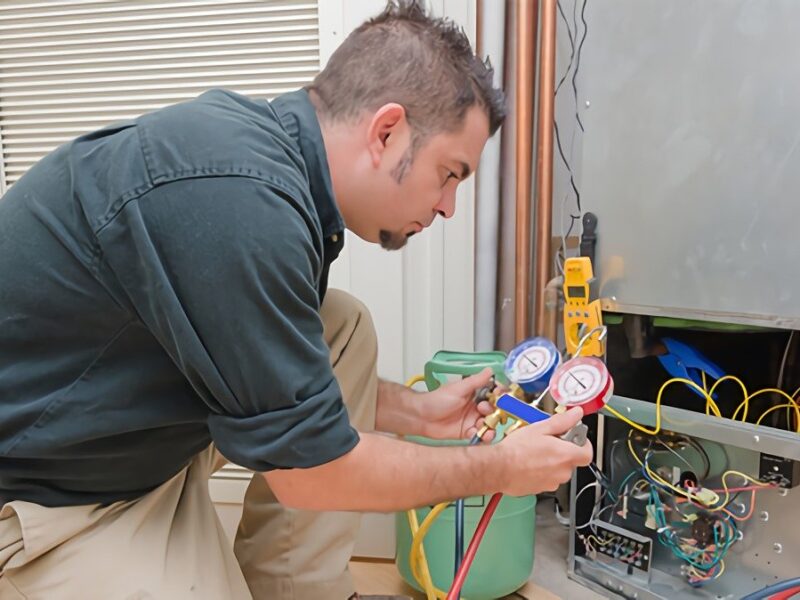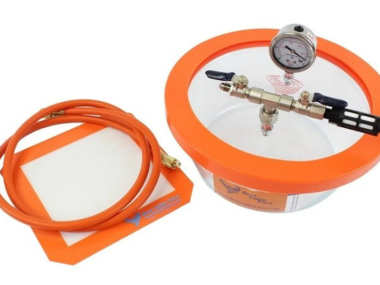HVAC (Heating, Ventilation, and Air Conditioning) is constantly evolving, driven by technological advancements and environmental concerns. One significant change in recent years has been the phase-out of hydrochlorofluorocarbon (HCFC) refrigerants like R22, which have been widely used in HVAC systems for decades. This shift has necessitated the adoption of R22 alternatives, which come with their own advantages and drawbacks. This article will demystify these alternatives, exploring their pros and cons for HVAC systems.
The R22 Phase-Out
R22, also known as Freon, was once the refrigerant of choice for many air conditioning and refrigeration systems. However, its broad use has been questioned because it hurts the ozone layer. In response, the Montreal Protocol, an international treaty adopted in 1987, mandated the phase-out of R22 and other HCFCs.
As a result of this global commitment to environmental protection, R22 production and importation were banned in developed countries like the United States and Europe in the early 2000s. Subsequently, the HVAC industry was tasked with finding suitable R22 alternatives to keep existing systems running efficiently and sustainably. In exploring R22 alternatives, we’ll explore how the Raiven platform can assist HVAC technicians in making informed decisions.
Pros Of R22 Alternatives
- Environmental Friendliness: One of the best things about options for R22 is that they are better for the earth. Most of the options are hydrofluorocarbon (HFC) or hydrofluoroolefin (HFO) refrigerants, which don’t hurt the ozone layer at all. This change aligns with attempts worldwide to fight climate change and cut down on greenhouse gas pollution.
- Improved Energy Efficiency: Many options for R22 are made to use less energy. When people switch to these options, they may use less energy, which is good for the environment and saves money for businesses and homes.
- Availability: R22 became increasingly scarce as the phase-out progressed, making it difficult and expensive to source. R22 alternatives, on the other hand, are readily available and can be purchased without the same restrictions.
- Compliance With Regulations: Switching to R22 alternatives ensures compliance with environmental regulations. Continuing to use R22 can result in significant fines and legal consequences.
- Long-Term Viability: With the ban on R22, relying on it for HVAC systems is not a sustainable option. R22 alternatives provide a more long-term solution, safeguarding your investment in HVAC equipment.
Cons Of R22 Alternatives
Compatibility Issues: One of the most significant drawbacks of R22 alternatives is their compatibility with existing equipment. Many older HVAC systems were designed specifically for R22 and may not function optimally with the new refrigerants. This can necessitate expensive retrofitting or complete system replacements.
- Performance Differences: R22 alternatives are generally more environmentally friendly but may not provide identical performance characteristics. Some other options may have lower cooling or heating capacity, which could affect the comfort level in your home or workplace.
- Cost: The initial cost of transitioning to R22 alternatives can be substantial. This includes purchasing the new refrigerant, modifying or replacing equipment, and hiring professionals to perform the necessary work. However, these costs may be outweighed by long-term energy savings and compliance benefits.
- Lack Of Standardization: Some R22 options are not the same. It can be hard for HVAC workers to determine which recipe is best for a given system because different manufacturers make different ones. This can cause misunderstandings and could cause problems with connectivity.
- Limited Options For Existing Systems: There may be no suitable R22 alternative for some older HVAC systems. In such cases, the only viable option may be replacing the entire system, which can be costly.
Common R22 Alternatives
Several R22 alternatives have emerged in response to the phase-out. These include R407C, R410A, R134a, and newer options like R32 and HFO refrigerants like R1234yf and R1234ze. Each of these alternatives has its unique characteristics and performance profiles.
R407c: This is a commonly used R22 alternative known for its compatibility with existing R22 systems. However, it may not be as energy-efficient as some other alternatives.
R410a: R410A is known for its high energy efficiency and zero ozone depletion potential. It has become popular for new HVAC systems, but it may not work well with older R22 equipment.
R134a: This refrigerant is widely used in automotive air conditioning systems but is not as common in residential or commercial HVAC applications.
R32: R32 is gaining popularity due to its lower global warming potential (GWP) than R410A. It offers a good balance between environmental friendliness and performance.
HFO Refrigerants: Hydrofluoroolefin (HFO) refrigerants like R1234yf and R1234ze are designed to have low GWPs and are considered environmentally friendly options. They are increasingly used in automotive and commercial air conditioning systems.
Making The Right Choice
When it comes to choosing the suitable R22 alternative for your HVAC system, there are several key considerations:
- System Compatibility: Determine whether your existing HVAC system is compatible with the chosen alternative. Consult with HVAC professionals who can assess your equipment and recommend the best action.
- Performance Requirements: Consider your specific cooling and heating needs. Some alternatives may be better suited for particular applications or climate conditions.
- Environmental Impact: If protecting the environment is important, choose options with lower GWP numbers. This fits with attempts around the world to cut down on greenhouse gas pollution.
- Cost-Benefit Analysis: Evaluate the overall cost of transitioning to an R22 alternative, including equipment modifications or replacements, against the potential energy savings and compliance benefits over the long term.
- Regulatory Compliance: It is important to ensure that your choice meets all local and national refrigerant rules. Not following the rules can get you in trouble with the law and cost you money.
Conclusion
The phase-out of R22 has led to the emergence of various alternatives, each with its own set of pros and cons for HVAC systems. While the environmental benefits of transitioning to these alternatives are clear, the challenges of compatibility, performance variations, and initial costs must be carefully considered.
Ultimately, an R22 alternative should be chosen with the help of HVAC professionals who can assess your specific needs and equipment. By carefully analyzing the advantages and drawbacks, you can make an informed decision that will maintain the long-term performance and longevity of your HVAC system while also contributing to a better and more environmentally friendly future.
.







